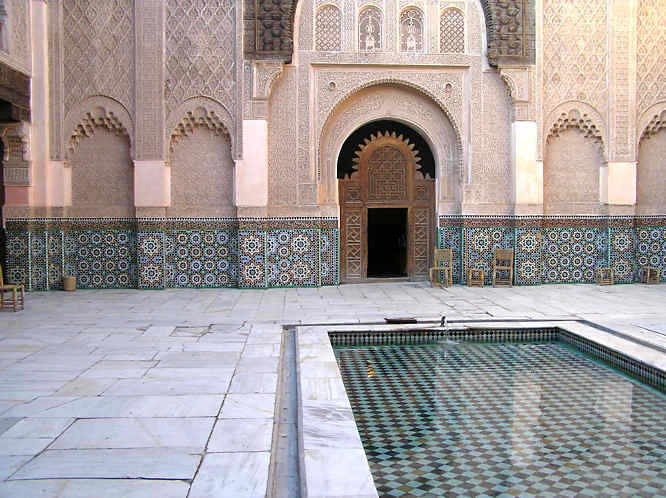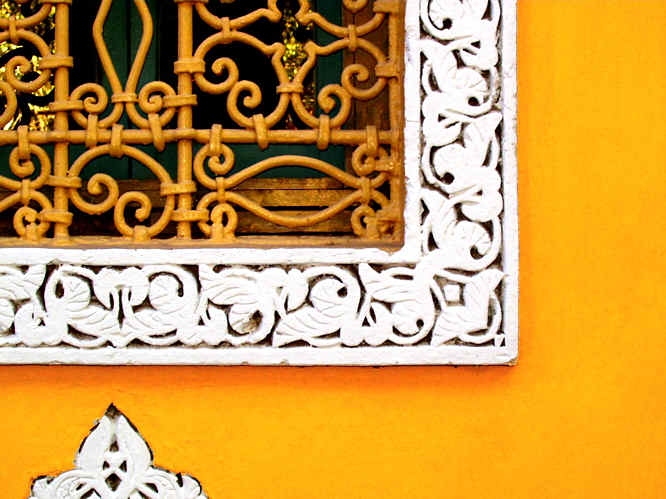A Quick History of Morocco
The original people of Morocco were the tribal Berbers, an ancient race who speak a language distantly related to Egyptian and Hebrew. The name 'Berbers', was imposed on them by the Arabs meaning those who were not Arabs. In the twelfth century BC Morocco was invaded by the Phoenicians who come from what is now Syria, Jordan, Lebanon, Israel, and Palestine.

They established trade centres at several points along the North African and Spanish coasts. The Carthaginians, who originated in north east Africa, modern Tunisia, later took over these Phoenician colonies and expanded them as part of their mighty independent Punic Empire. Later the Greeks visited the coastal settlements and established trading houses.
The Roman Empire then marched in during the 2nd century BC. They introduced the word 'Moor' (Maur) as a general term for the dark skinned North Africans. (Later it became a general term for a muslim.) The Romans stayed for six hundred years and morocco was part of the Roman province known as Mauretania Caesaria. Christianity became the official religion around 150AD. The Roman Empire fell apart around 410AD and their soldiers were recalled to defend the homeland.
The Vandals, a Germanic tribe that had moved into the Roman province of Iberia (now Spain) were known for disorder, giving rise to the term vandalism. The Roman Empire gave the Vandals permission to move into their old North African province. In 429AD very nearly the entire population of 30,000 Vandals, moved in one mass. They had come for the wealth of the North African. The Vandals were never good administrators and the urban centres and trade routes declined, draining away what wealth there had been. The Berber tribes controlled outlying areas and because they continued to war with each other they could not join together to kick out the invader.

Part of what was left of the old Roman Empire transformed into the Byzantine Empire. In 533AD they attempt to reunify the lands that had been once controlled by Rome and drove the Vandals out of the North Africa. Their control in the Morocco was never really strong, consisting mainly of a few military outposts. The Berbers still retained a certain amount of autonomy.
In 670AD the power of Islam was expanding and the Arabs moved west into the North African costal plain and later invaded Morocco in 683AD. The last outpost of the Byzantine Empire was deserted in the early part of the 8th Century. All of North Africa was now Muslim under Arab control. Over the next few years tribal in fighting meant that different cities and regions were controlled by different groups.
In 711, the North African Moors invaded Visigoth, Christian Spain. Under their leader, an African Berber general named Tariq, they conquered most of the Spanish peninsula and placed it under North African control for over 600 years until the last remaining Moorish fortress at Granada surrendered to the Christian army in 1492.
In 1502 Spanish and Portuguese Jews and Moors were expelled by the conquering Christians. They settled in Morocco and brought with them their cultures, arts and crafts that had a major influence on Morocco as can be seen at the Marrakech Museum. The country flourished and prospered. It became a centre for the arts. This period became known as Morocco's golden age. Morocco became united and remained independent from the rising power of the Ottoman Turks who took control of nearby Algeria and Tunisia came into the Ottoman sphere.
The expanding maritime power of the Christian Spanish and Portuguese during the 15th century lead to fighting between for control of the North African Coastal Ports. In 1578 however, the Moroccans beat the Portuguese and regained control of the port of Cueta, and by 1700 Morocco had taken control of almost all of coastal towns that were under Portugal's rule.
During the 17th century European colonialism replaced Turkish domination. The coast of Morocco and the rest of North Africa came under attack from the English, Spanish, French, and Danish as they "liberated" North Africa from the Ottoman Empire.
In 1904, the Moroccan Sahara was shared out, under a secret treaty, between France and Spain. Casablanca was attacked by the French in 1907. A Protectorate Treaty dividing Morocco into French, Spanish and international zones of influence was signed on March 30,1912.
In 1904 Morocco was divided between France and Spain. France received the larger portion. Germany wanted in too so in 1911 a German gunboat was sent to the French owned coastline of Morocco. War was averted though, when the French made an agreement with Germany whereby the French would keep control of Morocco, whilst they allowed the Germans concessions elsewhere.
The French regained control of Morocco after World War Two. In 1950 the sultan of Morocco requested that Morocco become an independent country. The first request was declined. The French deported the Royal Family to Corsica. Violence towards the French officials resulted from that decision.
In December 1956, The sultan was taken to France, where he signed a declaration promising that there would be a constitutional monarchy in a democratic state. In March 1956, the French signed an agreement in which they granted full independence to Morocco. The Spanish did the same and Tangier lost its international status during the same year. In 1957 the Sultan Mohammed became king of an independent Morocco. In 1961, King Mohamed V was succeeded by Crown Prince Hassan II who presented a new constitution. The first elected parliament assembled on 1963.
travel books

